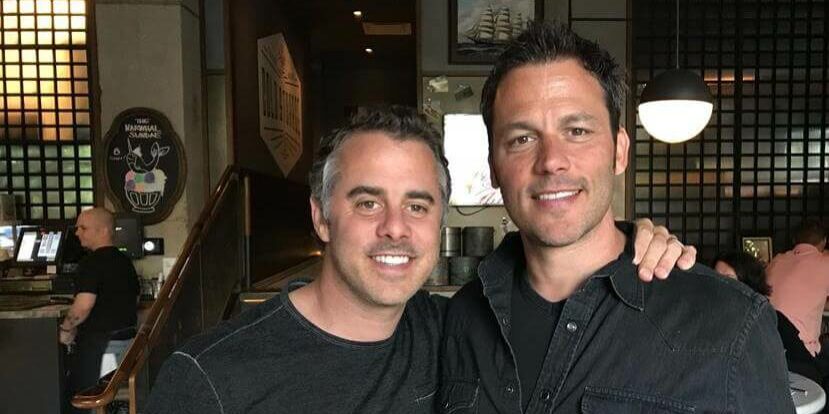“Close your eyes. Now take a moment to notice the sensations of breathing where you feel it most prominently. Maybe that’s feeling the air moving in through your nose. Or perhaps the sensations associated with the rising and falling of your chest or abdomen.”
I was sitting in the green room in Orlando, preparing to give my final keynote of 2018 at Ernst & Young’s annual Milestones event for its recently promoted leaders, as I began to listen to the speaker ahead of me: Clif Smith, EY’s Americas Mindfulness Network leader. He was guiding more than 2,500 senior managers through a meditation exercise, and I decided to join via the monitor backstage. Not a bad way to prepare to take the stage. Clif was the perfect setup man, and I was inspired to see EY invested in elevating the impact that mindfulness can have for its management team.
I also wasn’t terribly surprised.
EY is building a better working world. That world requires better leadership, which is something EY knows a little bit about. It’s no accident it’s celebrating 20 years on Fortune’s “100 Best Companies To Work For” list. Part of its leadership model includes a commitment to “personal leadership.” In part, this means “actively maintaining personal well-being, energy and enthusiasm.” If you don’t lead yourself first, it’s hard to lead anyone else.
Leadership is an inside-out game. The best leaders understand that the ability to connect and have impact starts on the inside — with yourself. And the best companies, like EY, are encouraging leaders to embrace “inner work.”
Post-conference, I knew I wanted to stay connected with Clif. I recently got to catch up with him and learn more about how EY is integrating mindfulness training, and how mindfulness can contribute to organizational culture in a meaningful way.
What Exactly Is Mindfulness?
Clif defines mindfulness very simply: “Paying attention in the present moment, on purpose, without judgment, with an attitude of kindness and curiosity,” he says.
In other words, it’s attention training — training your mind to be more present. “It’s an innate, universal human skill,” Clif says.
On one level this is practical. Think about the distractions we have around us. We have so many objects that can send us an alert: our phone, our computer, our tablet, our watch. It’s easier than ever before to get sucked into a vortex of distraction. A study by technology insurance firm Asurion found that Americans look at their smartphones every 12 minutes on average. In its own research, Apple found similar results — the typical iPhone user unlocks their phone 80 times per day. Increasingly, our smartphones are becoming an addiction.
Mindfulness can make a difference. Researchers at Johns Hopkins found that mindfulness helps ease stress and anxiety, and numerous other studies show the same thing. It’s not difficult to see how that can translate into a more productive team.
Why EY Is Embracing Mindfulness
We all want to be more productive, but mindfulness also does something else: It creates better leaders by cultivating emotional intelligence. “Emotional intelligence is a key foundational set of skills for leadership and relationship building,” Clif explains.
That’s why EY’s programs aren’t just for the senior managers. Clif has also introduced mindfulness training to EY’s NextGen Program for employees fast-tracked for leadership roles. Even the interns learn mindfulness techniques. “If we can get folks when they’re just coming in — and during transition into more senior roles — it’s going to spread more quickly throughout the firm,” Clif says.
That’s why EY now has over 60 “mindfulness champions” spread through its regions across the globe, in over a dozen countries. “This type of training really helps people be present with others,” Clif says.
In other words, EY is creating a culture where its employees decide how they will show up. The best leaders are present with presence. They anticipate change; they don’t react to it. To be this self-aware, leaders need the ability to focus and cultivate presence of mind — and by creating a culture that emphasizes these skills, EY is making sure it has a talent advantage.
The Benefits of Mindfulness
EY’s internal feedback is proving out the numerous benefits linked to its mindfulness training programs. “We’re seeing increases in job satisfaction,” Clif says. “Increases in focus, in connection, in confidence.”
But mindfulness isn’t just about influencing corporate culture. It is also very much about an emphasis on the whole person. EY employees are reporting better work-life balance. They say their relationships at home are better after the complete mindfulness training. “I’ve seen many statements that say ‘This is the most impactful training I’ve ever seen. This has been life-changing,’ ” Clif says.
This is the beauty of mindfulness training. “It doesn’t just make you a better leader,” Clif says. “It helps you notice your whole life.”
A Simple Mindfulness Exercise You Can Do
Clif shared a simple mindfulness exercise to bring a little more awareness and presence into your daily life. It’s called the S.T.O.P. exercise.
- S: Stop whatever it is you’re doing.
- T: Take a breath. Try to feel your breath. Notice it as you breathe in and out.
- O: Observe the environment around you. Then observe the environment inside you. What’s going on? What are your thoughts and emotions? It’s OK if they’re negative. Notice them — and then let them be.
- P: Pose the question: “What’s important now?” Then, proceed with intention.
Try this the next time you get home from work and ready to walk through the door. You might find it a whole lot easier to be completely present to the people that matter most. That is a gift.










